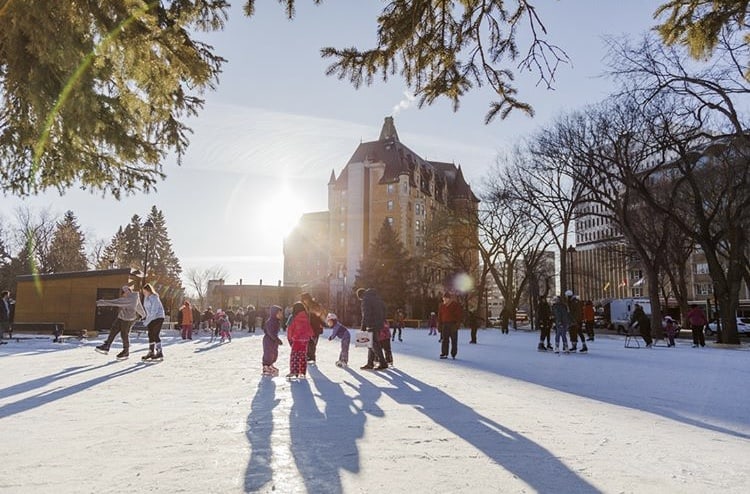
Ice sports are among the most enduring aspects of recreation in Saskatchewan, and it is only fitting to ensure they remain adequately funded.
Restarting the Community Rink Affordability Grant is a pledge both the Saskatchewan New Democrats Party and the Saskatchewan Party have offered on their campaign trails for the upcoming election. Whether it’s curling, ice hockey or figure skating, there are over 600 rinks that rely on the maintenance and continued support of the province.
The community rink grant was launched in 2012, after it was promised during the 2011 provincial elections. The provincial government invested more than $1.6 million in the program, helping 554 facilities in 387 communities.
The program continued for a few more years, giving $2,500 to rinks to maintain their facilities, with hopes of also maintaining the prairie culture and promoting athleticism. In 2015, the grant funded eight rinks in Regina, and 633 ice surfaces in 373 communities across the province. Overall, the grant helped nearly 2,000 community rinks in Saskatchewan.
This funding has helped rinks that were part of schools, First Nations communities and non-profit organizations.
However, it was cut after four years of operation in 2016 due to a projected billion-dollar government deficit, all while the Sask. Party was in power.
The impact was felt immediately in both urban and rural communities across the province.
This includes curling clubs in Regina, who were dependent on the grant to make ends meet in day-to-day operations. Small town rinks, like the one in the community of Kinistino, were affected greatly because they used the support to cover their biggest costs, like heat and power. Others used it to pay for repairs, infrastructure and equipment such as new Zambonis.
These clubs and facilities were then relianton municipal tax exemptions, as was the case for Regina’s Highland and Tartan curling clubs, who were struggling after the abrupt suspension of financial support from the grant. Like all rinks affected by the cut, they were forced to find new ways to keep people coming to the rink.
The fact that the grant was cut during a Sask. Party government gives Sask. NDP leader Ryan Meili some credibility when he promises the return of the grant. The grant suspension aligns well with the Sask. NDP’s trademark emphasis on the Sask. Party’s track record of making cuts not only to rinks, but to healthcare, education and tax credits for kids’ and family activities.
In a news release on the topic made by the Sask. NDP, they say that “the best indicator of future behaviour is past behaviour,” — hinting that the Sask. Party may not be able to sustain investment into the grant.
For the Sask. Party, promising the grant means renewing a commitment to sustain the livelihood of Saskatchewan communities. For leader Moe, who seeks his first re-election, it also represents a challenge to retain people’s faith in the party’s promises after the last premier’s decision to scrap the subsidy only months after opening the 2016 applications.
Regardless of the election outcome, the people of Saskatchewan are faced with the same promise of support from both parties. Sask. Party that has failed to sustain the grant before, and the NDP party is looking to prove themselves as a reliable alternative to keep those rinks not only functioning, but affordable as well.
Whoever gets the throne of the provincial legislature, if they keep this promise community rinks will receive funding and thrive under the support of the government once again.
—
Muhammad Awan
Photo: Instagram | @meewasinvalley